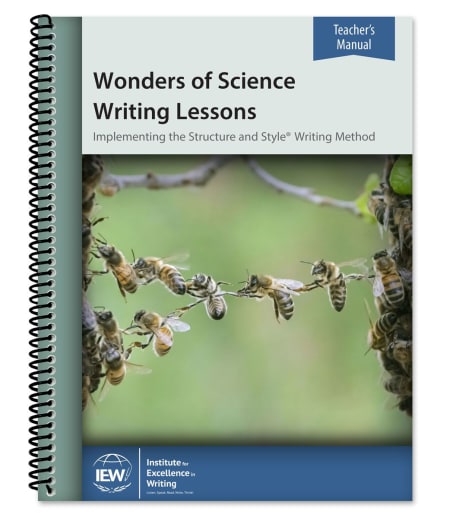Includes the Student Book and Teacher's Manual.
The consumable Student Book provides the reading material and helps the student practice and apply the unique IEW Structure & Style methodology, so you’ll see familiar lingo in the composition assignments. For example, students will always write a KWO (Key Word Outline), practice using 6 different “openers,” remove “banned words,” practice using clauses, and more. This course also emphasizes responding to literature and vocabulary acquisition (words come from reading and from the composition skills taught). Appendices include a modified MLA format guide (for those typing papers); mechanics; a critique thesaurus; suggested literature add-ons; and vocabulary (listed by lesson, with 6 quizzes).
The Teacher’s Manual includes reduced pages with student sample answers filled in. Outer-margin notes reference specific information; identify the downloadable files needed; indicate whether new rules, styles, or concepts are being introduced practiced, etc. The TM Appendices duplicate the five found in the student book, with the addition of “Review Games” which provides 16 games to help students review concepts and vocabulary words, apply parts of speech, apply writing concepts, and more. This course assumes that you as teacher have viewed the Teaching Writing: Structure and Style video course and own the Seminar Workbook, so that you can review the appropriate information connected with the course.
The suggested weekly schedule: Day 1: review vocabulary and learn the model/writing concepts. Any new structure concepts are introduced. Read the source text and write a KWO. Day 2, learn any new style or vocabulary. Review the KWO; learn the new stylistic technique; study vocabulary and complete exercises; use your KWO to begin a rough draft. Days 3 and 4 are more independent. On Day 3: review vocabulary words; finish writing your composition and check your writing with the checklist. Finally, on Day 4 write your final draft, use a checklist to check off tasks, make corrections recommended by your editor, and submit final draft.

